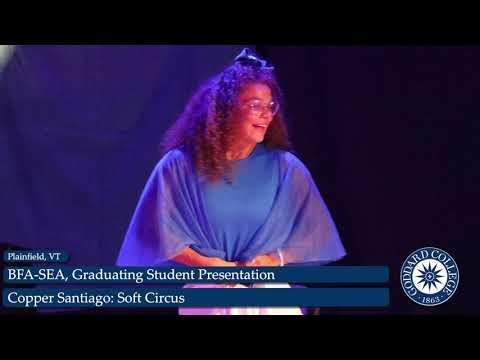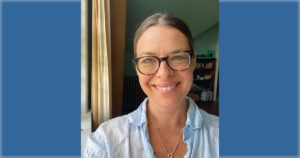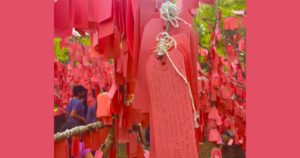by Rose Marie Sabangan, MFA Candidate
 Graeme Gillis, Artistic Director at New York’s Ensemble Studio Theater (EST), visited Goddard’s Plainfield campus on July 2, 2015. During a well-attended 3-hour exchange with MFA candidates in Dramatic Writing, Mr. Gillis presented and fielded student questions on play development opportunities available through EST.
Graeme Gillis, Artistic Director at New York’s Ensemble Studio Theater (EST), visited Goddard’s Plainfield campus on July 2, 2015. During a well-attended 3-hour exchange with MFA candidates in Dramatic Writing, Mr. Gillis presented and fielded student questions on play development opportunities available through EST.
EST is located at 549 West 52nd Street, 2nd Floor, New York, NY 10019.
For more particulars on submissions to EST programs, please visit:
http://ensemblestudiotheatre.org.
Mr. Gillis’ on-campus visit was made possible by Goddard’s Playwrights Enrichment Fund, which has brought in theatre professionals for career development since its inception at 2007.
Put it out there. That was my main take-away from your presentation. Can you give our aspiring Goddard playwrights an idea of what awaits us “out there,” after we leave our MFA program with a completed play in hand?
The first thing we talked about a lot in here was not just sitting and waiting, not being passive about putting yourself forward as a playwright. I think that means any number of things. It means seeking out theaters that do work that you’re interested in. It means making the effort and doing some research, or going to see shows if you have the opportunity. It means maybe putting on a play yourself, or even just organizing a reading of it, for an audience or in a living room with friends, so that your play continues to develop—so you’re not just waiting for someone to pick you. In terms of submitting your play, I do think it’s important to research and target theaters rather than just send them out like resumes. That said, I do think that when a writer submits a play, he’s done his job.
You recommend that playwrights have a B play come up after their A play. Some of the sample proposals you’ve shared with us have resumes attached, which show they have experience, which show their writing chops, as you put it. What are the odds our writers would be considered at EST, given just that one play coming out of our MFA program?
I think they’re decent odds—it depends on the play. That’s ultimately what matters. There are a few things more exciting than finding a really good first play. That said, once you finish a play, don’t wait to start another one. Any circumstance you can contrive to make you write your next play—you should ideally create some kind of external deadline for yourself, where someone cares if you finish it. That’s the best thing you can do for yourself, because then you’re not living and dying with one play.
For the benefit of those not in attendance today, both in our Plainfield and Port Townsend campuses, can you walk us through EST’s submission opportunities again?
The EST Sloan project is for plays about science, technology and economics. We take both completed scripts and one-page proposals describing the play that you’d like to write and the science, technology and economics that you’d be exploring with that script. Those awards range between $1,000 and $10,000. We usually get about 200 proposals each year, and we choose between 10 and 12 as a commission.
The Youngblood program is for emerging playwrights under the age of 30. We take submissions every summer. You write a Letter of Intent saying why you’d like to join, and you send the first 25 pages of a full-length play or a one-act play, whatever you think is your strongest work. We also get about 200 submissions for that each year. Some years we take 3 people, some years we take 7 or 8. It varies every year.
The other submission opportunity is the Marathon of One-Act Plays, which happens every two years at EST. We just finished this one, and so the next one will be in 2017—so you got a little time to write a one-act script for that. We take open submissions, so people who have a 20-25 page script should submit. If they don’t have a script, they should take it as an incentive to write one.
What exactly are you looking for in these submissions?
Honestly it’s what you look for in a good play. We want a sense of a world that we might not know, with idiosyncratic, unpredictable characters, a story that we want to see how it ends. For the Sloan project in particular, science should be an active presence in the play rather than just something that somebody does.
I particularly liked the story of the play, Hand to God. Can you elaborate on the play’s start at EST, before it went on to succeed in a big way?
Hand to God was written for the Youngblood Playwrights Group by Rob Askins. He actually wrote it for some friends at EST, and they came and did the reading. That play then had a series of readings before it got picked up to be produced by EST. Once we produced it, it struck a chord with the audience and pulled in new audience. We extended it twice. It ended up running for months at EST and was picked up by a producer and moved to an off-broadway run at MCC Theatre—and now is running on Broadway through 2016 with five Tony nominations!
Were reviews an important part of Hand to God’s success?
It was part of it. It’s always part of it. One of the great things about the success of Hand to God was that it was a grassroots success and the audience really championed it. The reviews were almost all positive, but they weren’t necessarily the kind of reviews that pushed a play through the roof. That play succeeded initially because of word of mouth, and honestly because of social media and people posting that you have to see this play, that you have to see what they’ve done there, and you have to see this cast. That is part of what was so exciting about it—it was a new kind of success. The critical acclaim followed that buzz as opposed to leading it. It was really exciting, because it was driven by the audience.
To help set expectations for our Goddard students, could you touch on rejections, and the arbitrariness of these submission processes?
I think that what you have to keep in mind when you’re rejected is that it’s not a final verdict on your work or your value as an artist. It’s somebody’s opinion. There’s often merit in that, and you have to take criticism. But also everybody’s judgment is flawed. Just because you get a rejection letter in the mail doesn’t mean that you are not a playwright. You have to keep doing your job. Part of the job sometimes is getting the rejection letter and then either getting to the desk and writing the next play or getting to the mailbox and sending it in again.
EST is based in New York. How could playwrights living outside of New York City participate in these EST initiatives?
I think you can always submit a play. In the case of Youngblood, you do need to live in New York because we meet every week. For writers’ groups it’s a little bit tougher. That said, I use the example of the Youngblood playwright who upon acceptance told us that she lived in Boston and then found a way to be at our meetings in Hell’s Kitchen every Wednesday night. So it’s only a problem if you let it to be a problem.
EST’s mission has been sustained by its flourishing membership and also by its initiatives to discover and produce new artists and plays. How successful would you say EST’s initiatives have been in replenishing the American theater?
I think we’re doing it. I think we’re on the upswing as far as replenishing the American theater. We replenish it every day.
I am of course speaking to a playwright as well. Could you speak a little bit on that aspect your own theater experience?
I have a great life in the theater. I enjoy pretty much every aspect of my participation in theater, but nothing is as exciting as writing a play. Nothing feels as good as writing a play and desperately trying to finish a play and having it read or seeing it performed. That’s still the thing that makes my feet float off the ground.
Rose Sabangan will graduate from the MFAW-WA Program this coming February.







